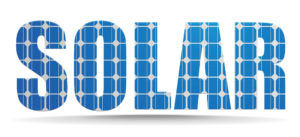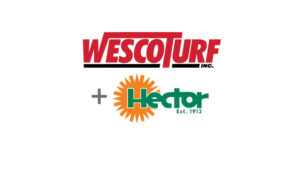Do you hear the low humming sound of technology? It is a whir, a buzz, a clicking noise and in many cases, it is virtually silent
Technology is creeping softly onto the golf course, often without fanfare. As a result, the escalating growth of high-tech tools in the golf industry has caught many people, including some superintendents, by surprise.
Software that controls irrigation and chemicals, golf utility vehicles basking in the sun, recharging their photovoltaic solar powered panels and drones patrolling the fairways are no longer futuristic concepts. Instead, this technology and other similar applications are a reality in golf operations today, presenting superintendents and their crews with effective new solutions for getting jobs done more efficiently.
The Battle Against the Shrinking Clock
You are not imagining it. Golf course superintendents really do have fewer hours in their work day than they did only a few years ago. Clocks may not have actually changed, but the demands on superintendents certainly have.
Paperwork, despite much of it being digital, continues to mount as regulatory agencies make accountability for the products used and the people employed increasingly more complex. Club members and avid golfers, armed with high-tech golf equipment, training aids, GPS and range finders, continually ratchet up their expectations of course conditions and playability. And don’t forget the hours required to finesse and refigure the budget to make less money go further.
Turf Assistant is one option to help superintendents reclaim some of the minutes and hours gobbled up by responsibilities. A cloud-base virtual assistant, Turf Assistant learns what matters to you, as the software user, by analyzing your routines. You set up your data just once, and the Turf Assistant software takes it from there, even providing you with product-specific reminders about your equipment maintenance, while concurrently updating your maintenance records.
If you like, Turf Assistant will assign tasks to your team and then follow the progress on those tasks, thereby supplying you with up-to-date, time-tracking records on each task and every worker. Among its many features is an app for quick access from your phone, an online white-board that is easy to share and always current and the capability to manage and coordinate multiple facilities.
But time and project management platforms like Turf Assistant are only the tip of the technology iceberg when it comes to helping superintendents win the battle against the shrinking clock.
Precision Turfgrass Management
With fewer hours available to spend on the golf course, greenkeepers and turf managers benefit from tools, programs and apps that function as their second set of eyes. Such technology applications are becoming so integral to modern turf management and maintenance that the term “precision turfgrass management” and its acronym PTM have claimed a place in the industry’s lexicon.
The foundation of PTM traces back to precision agriculture (PA), a model that has been around for more than two decades. Sometimes called satellite farming, PA focuses on site-specific crop management as a concept for observing, measuring and responding to field conditions and crop activity.
PTM, which the USGA refers to as “the next step in resource conservation,” includes site-specific management of water and chemicals to ensure that each is added in the correct quantities and at the optimal time. PTM also includes the sampling and tracking of information, key soil and plant properties, the use of mobile multiple-sensor devises and the GPS labeling of all site data.
The Toro Company and others in the industry are advancing the use of multi-sensor mobile units that have been purpose built for turfgrass venues. Supporting a number of PTM field applications, remote sensors provide real-time feedback on moisture content of soil, its temperature, salinity concentrations and other critical data.
Put a Pin in It
Another technology innovator, Playbooks for Golf, offers a variety of products and applications, including its Coverage System software for comprehensive chemical planning and tracking and its Irrigation Playbooks software for irrigation mapping.
The company’s EZPins software aids superintendents with pin placement, making it easy when selecting hole locations to isolate areas of the green for agronomy purposes, to track hole placement historically, and to adapt placements for wet or dry weather or tournament and event needs. The EZPins mobile app provides golfers with exact locations as well as providing golf operations the option to offer a printed pin sheet with potential paid advertising.
Solar Savings
Golf cars that use the sun’s energy for charging the cart’s electric battery are another technology application that can create valuable time and cost savings. Carts and utility vehicles, supplemented by solar energy, can stay in use longer and return to use more quickly than carts that rely solely on electricity for recharging batteries. Long-term, the car’s battery life is extended while charging costs are reduced. PowerFilm Inc. and Solar Electric Vehicle Systems are two companies that provide products for retrofitting golf vehicles with solar panels or solar roofs.
Droning On …and On
Only a few years ago, an unmanned aerial vehicle (UAV) or drone was little more than quixotic science fiction, especially on a golf course. The earliest applications for drone use in golf were aerial photography and videos for marketing, but the birds-eye view a drone affords was quickly recognized as a way to deliver a seemingly endless list of benefits for superintendents.
Whereas some drone companies are only now finding their way into the golf industry, Greensight Agronomics, a turfgrass and agricultural drone services provider, was, in 2016, already launching its second generation of turfgrass drone service. Ready to ship earlier this year, the company’s newest iteration of products was developed in conjunction with golf course superintendents in the U.S. and Canada and included a proprietary thermal camera that enabled Greensight software to (among other things) determine the transpiration rate of nine holes of turfgrass per each flight.
As the experts at Greensight explained, “The drone flies completely autonomously. The user simply places it on the takeoff site before the flight, then plugs it back in to power after the flight is complete. Data are uploaded and processed automatically using GreenSight’s Cloud service.”
By using Greensight’s services and products, moisture mapping and alerts, shade mapping and fungal and pest alerts can all be customized to the requisites of your golf course, saving you countless hours while potentially saving the golf course thousands of dollars.
Robots Aren’t Taking Over the World… or Your Job
If ever there was a win-win partnership, it is the pairing of golf course crews with the right technology tools. Far from being a threat to job security, technology can help superintendents plan and execute the activities of their golf course and track and evaluate its conditions, making them more effective and potentially more valued as employees and leaders.
Even two of the most creative minds of our generation felt it important to remind us that as significant as technology is, it doesn’t replace or surpass the passion and skill of the individual. Bill Gates observed, “Technology is just a tool,” while the typically aloof Steve Jobs elaborated, saying, “Technology is nothing. What’s important is that you have a faith in people, that they’re basically good and smart, and if you give them tools, they’ll do wonderful things with them.”
When you read Job’s words, you can’t help but think that he must have known a little something about the amazing outcomes golf course superintendents and their crews produce every day.
Find out more about the products mentioned in this article at TurfAssistant.com, Toro.com, Goplaybooks.com, Powerfilmsolar.com, Solarevsystems.com, and Greensightag.com.




























